Yellow Cockatiel vs Other Varieties: Spotting the Differences
Dive into the fascinating world of Cockatiels and discover how the Yellow variety stands out with its vibrant hues, unique traits, and captivating personality.

Cockatiels, with their charming personalities and striking features, have soared in popularity as pet birds. Among the various color mutations, the yellow cockatiel stands out with its vibrant plumage. But how does it compare to other varieties? Let's delve into the world of these feathered friends and spot the differences.
Key Takeaways:
- Understand the unique characteristics of the yellow cockatiel compared to other color mutations.
- Learn about the genetic differences that give rise to the various cockatiel varieties.
- Discover how to differentiate between male and female cockatiels across different mutations.
The Yellow Cockatiel: A Ray of Sunshine
The yellow cockatiel, often referred to as the lutino cockatiel, is one of the most sought-after varieties. This beautiful pet bird boasts bright yellow feathers that can captivate any bird lover. The lutino gene is responsible for this gorgeous lutino cockatiel's yellowish tint, which is especially prominent in the yellow head and bright orange cheek patches.
Unlike the normal grey cockatiel, which is primarily grey with white features and orange cheeks, the lutino's plumage is a stunning white to light yellow. The lutino cockatiel is one of the second cockatiel mutations discovered in the aviculture world, making it a relatively new addition to the cockatiel family.
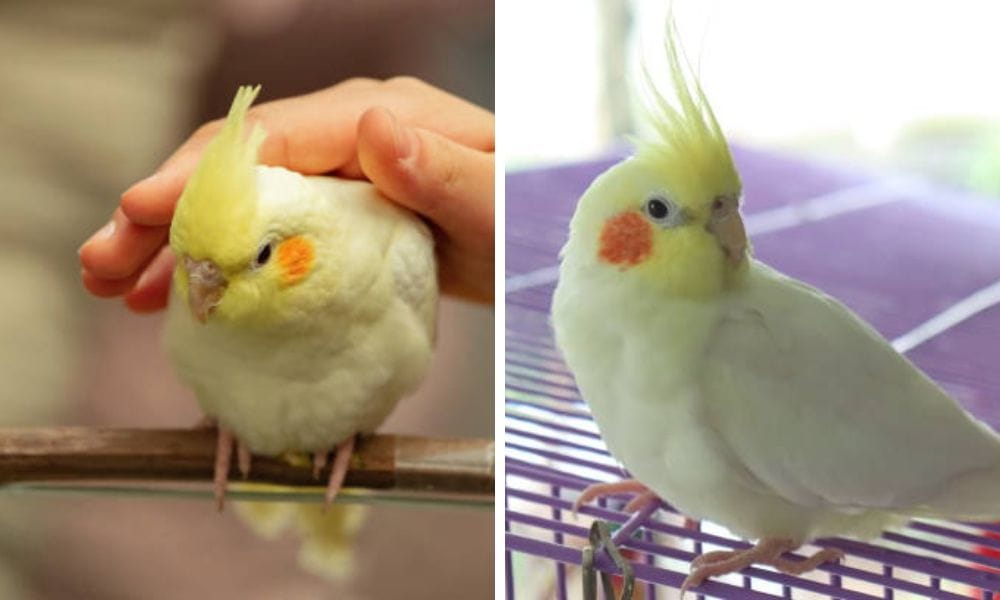
The Normal Grey Cockatiel: The Wild Type
The normal grey cockatiel, or wild type, is the foundation for all other color mutations. It has a light grey body with darker grey on the wings and tail feathers. The male and female cockatiels can be distinguished by their facial feathers covering; males have bright yellow faces and bright orange cheek patches, while females have a more muted face with grey markings.
The normal grey is the closest in appearance to the cockatiel's ancestors in the wild, Nymphicus hollandicus. It's the benchmark against which all other mutations are compared, and it's still a popular choice for those who appreciate the cockatiel's natural beauty.
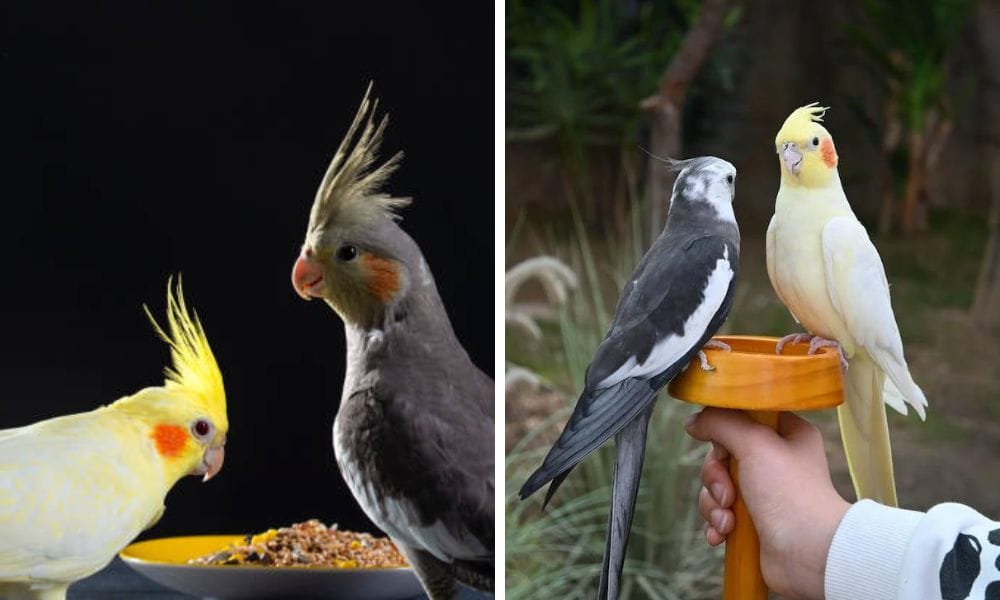
The Cinnamon Cockatiel: Warm Hues
The cinnamon cockatiel is another popular breed, characterized by its warm, cinnamon-brown coloring. This mutation affects the color of the feathers, turning what would be grey into a soft brown, while maintaining the yellow and orange areas. The cinnamon gene is a sex-linked mutation, which means it is passed down differently between male and female cockatiels.
Cinnamon cockatiels have a more subdued look compared to the bright yellow feathers of the lutino. However, they still possess the same playful and affectionate nature that makes cockatiels such beloved pet birds.
The Pearl Cockatiel: Speckled Beauty
The female pearl cockatiel is a true work of art. This variety has a pattern of speckled or 'pearled' feathers, which can range from light grey to yellow. The pearling is more prominent in females, and it can sometimes fade in males as they mature. The pearl mutation adds a layer of complexity to the cockatiel's plumage, making each bird unique.
Male lutino cockatiels can also carry the pearl gene, resulting in a lutino pearl variety. These birds combine the bright yellow feathers of the lutino with the intricate pearl pattern, creating a stunning visual effect.
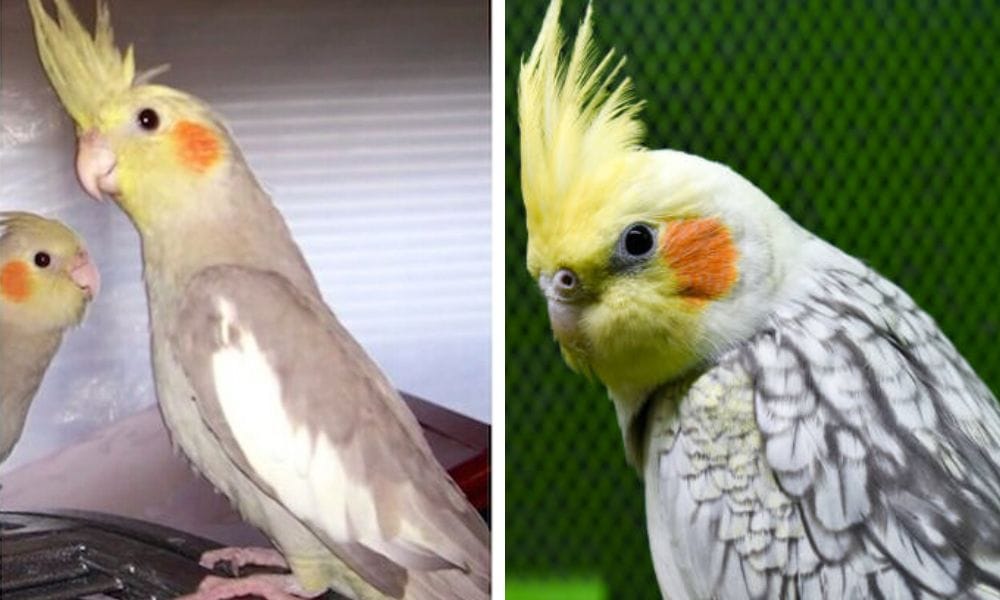
The Albino Cockatiel: A Striking Contrast
Albino cockatiels stand out in the parrot family with their pure white plumage, devoid of any coloration. This second cockatiel mutation results in a bird that lacks the typical pigments found in other birds, making it a unique and sought-after variety. The absence of the orange cheek patch and the yellow face that characterizes many cockatiels gives the albino its distinctive appearance. Their striking red eyes, which can be quite captivating, are another feature that sets them apart from their colorful counterparts.
Unlike the lutino pied, which still retains some yellow coloring, the albino cockatiel is completely white, creating a ghostly yet elegant aesthetic. This mutation can occur in both male and female cockatiels, and while they may lack the vibrant colors of other varieties, their serene beauty is undeniable. The albino's white plumage can serve as a canvas, highlighting the graceful movements and long tails that are characteristic of the cockatoo family to which they belong.
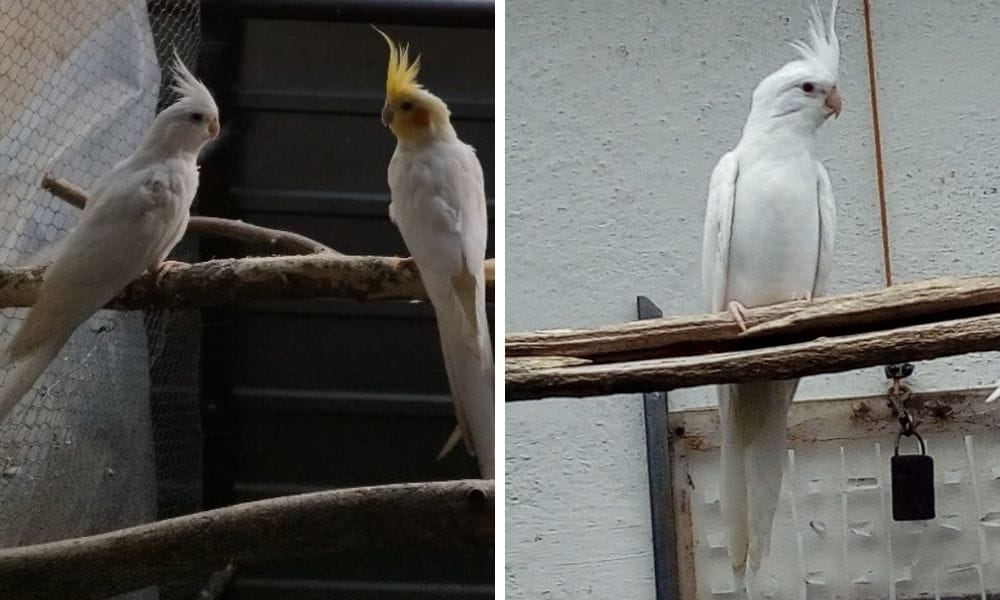
The Blue Cockatiel: A Rare Sight
The blue cockatiel is a rarity in the animal world, primarily because the blue mutation is not naturally occurring in cockatiels as it is in other parrots. However, through selective breeding, some enthusiasts have attempted to create a blue cockatiel by pairing them with other birds that carry a blue gene. The result is a bird with a muted blue hue that can appear on the outer edges of their wings and tail. This subtle blue tint is often most visible when the bird is in flight or when the light hits their feathers at a certain angle.
While the quest for a true blue cockatiel continues, these birds with hints of blue in their plumage are a testament to the ingenuity and dedication of breeders within the aviculture world. The blue shades, when present, offer a cool contrast to the warm tones typically seen in a cockatiel's plumage, such as the cinnamon or pearl pied varieties. Enthusiasts who appreciate the nuances of bird coloring may find the challenge of breeding for this elusive hue an engaging and rewarding pursuit.
The Pied Mutation: A Patchwork of Colors
Pied cockatiels are the result of a mutation that causes random patches of color loss, leading to a bird with a mix of its original color and white or yellow areas. The pied mutation can occur in both the lutino and normal grey varieties, resulting in birds with prominent white flashes or a light yellow body with varying patterns.
The pied cockatiel is a favorite among enthusiasts because no two pieds are exactly alike. Their unpredictable markings make them a fascinating subject for breeders and pet owners alike.
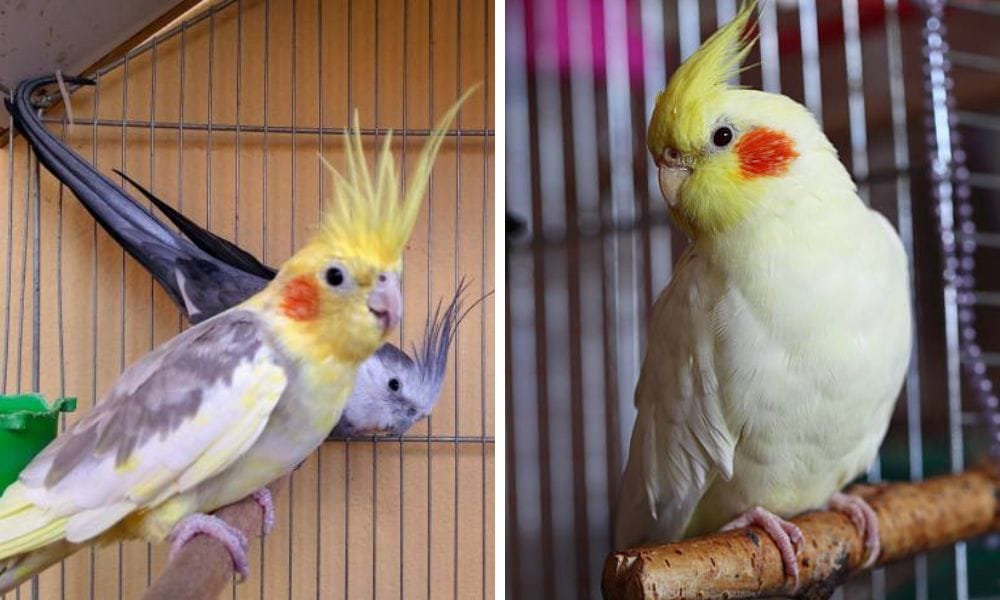
The Lutino Gene: A Genetic Wonder
The lutino gene is a recessive trait that eliminates the grey color in the cockatiel's feathers, allowing the yellow and orange pigments to shine through. This gene is what gives the lutino cockatiel its characteristic yellow crest and red eyes. The lutino gene can also combine with other mutations, such as the pearl or pied, to create even more variations.
Understanding the genetics behind the lutino cockatiel and other mutations is crucial for breeders who aim to produce specific color combinations. It's also interesting for pet owners who want to learn more about their feathered companions.
The Aviculture World: Breeding and Varieties
In the aviculture world, breeding cockatiels for color mutations is both a science and an art. Breeders like Cliff Barringer have dedicated their lives to understanding the genetics of these birds and have been instrumental in developing new varieties. The lutino was first bred in Florida Parrot Jungle in the 1950s, and since then, many more mutations have been discovered.
Breeders must be knowledgeable about the inheritance patterns of the various mutations to successfully produce the desired offspring. This knowledge is also valuable for pet owners who may be interested in the breeding potential of their birds.
Male and Female Cockatiels: Sexual Dimorphism
Sexual dimorphism is the term used to describe the physical differences between male and female cockatiels. In many mutations, including the normal grey and cinnamon, males have more vibrant coloring than females. However, in lutino cockatiels, both sexes are similar in color, making it more challenging to distinguish between them.
The differences between male and female cockatiels are not just cosmetic. They can also affect behavior, with males typically being more vocal and more likely to mimic sounds and talk cockatiels.
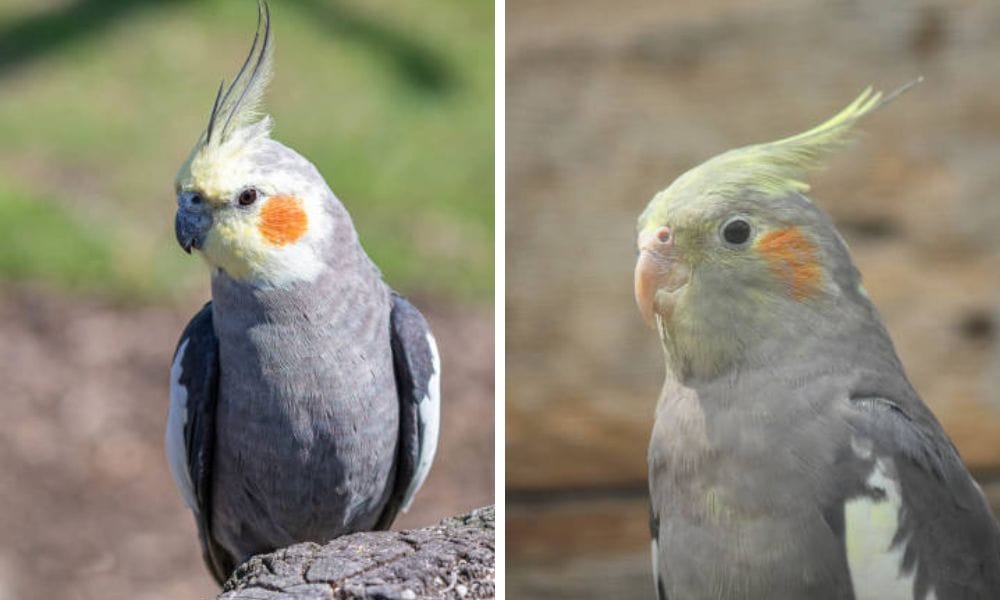
Housing Your Cockatiel: Cage Considerations
When it comes to housing your cockatiel, whether it's a yellow cockatiel or another variety, the bird cage is an essential consideration. The cage should be spacious enough to allow for flight and exercise, with horizontal bars for climbing. It's also important to provide a nest box for breeding pairs, as well as toys and perches to keep your cockatiel entertained.
Proper cage maintenance is crucial for the health of your cockatiel. Regular cleaning and the provision of fresh food and water will ensure that your pet bird remains happy and healthy, regardless of its color mutation.
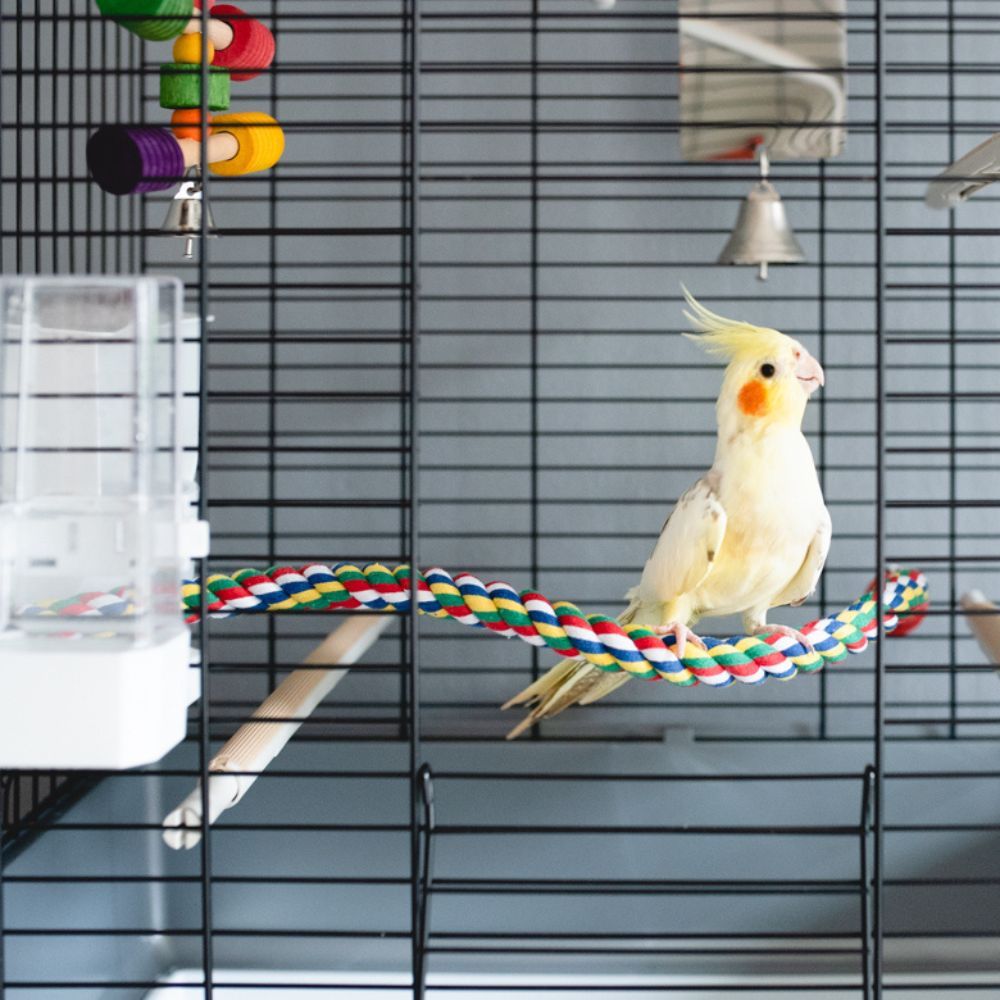
Summary
Cockatiels are not just a single breed but a spectrum of colors and patterns, each with its own unique charm. The yellow cockatiel, with its bright yellow feathers and lutino gene, stands out among the crowd. However, other varieties like the normal grey, cinnamon, pearl, and pied offer their own distinct beauty and personality traits. Understanding the differences between these mutations, as well as the genetic factors that contribute to them, can enhance the experience of owning and possibly breeding these beautiful pet birds.
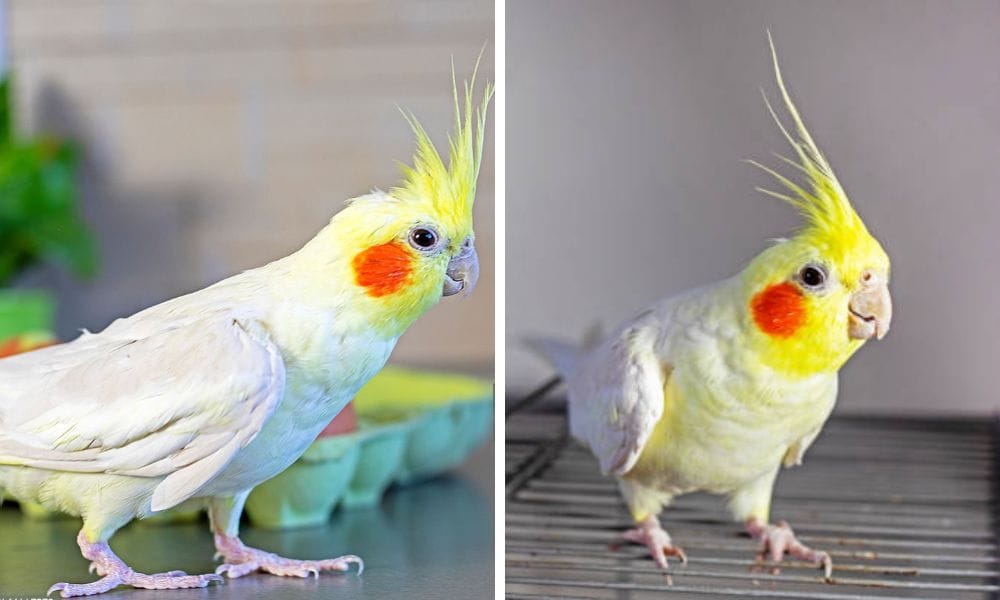
FAQ Section
Q: What is the main difference between a yellow cockatiel and other varieties? A: The main difference is the coloration. The yellow cockatiel, or lutino, has a white to light yellow body with a yellow head and bright orange cheek patches due to the lutino gene. Other varieties, like the normal grey, cinnamon, and pearl, have different patterns and shades ranging from grey to brown and may have speckled or pied patterns.
Q: Can you tell the sex of a yellow cockatiel by its color? A: It's more challenging to determine the sex of a yellow cockatiel by color alone because both males and females share similar bright yellow feathers. However, behavioral cues and other physical characteristics can sometimes help differentiate between the sexes.
Q: How do you care for different cockatiel varieties? A: Regardless of the variety, all cockatiels require a spacious cage with room for flight, a balanced diet, clean water, and regular social interaction. The care requirements are generally the same across all color mutations, although some may have specific needs based on their genetic makeup, such as increased sensitivity to sunlight in lutino cockatiels due to their lighter pigmentation.

